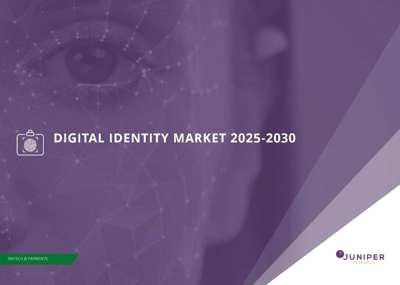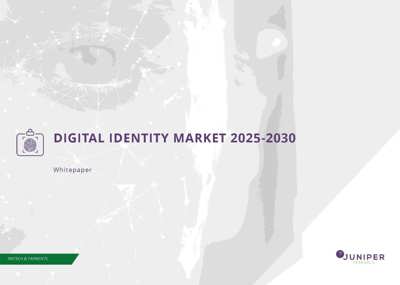Biometric Authentication: The Key to a Passwordless Future?
Passwords have long been known to be insecure, with malicious actors frequently bypassing password-based security protocols. However, security concerns are not the only drawback of password-based authentication. They can be costly and burdensome to manage, with users frequently forgetting and thus having to reset passwords, which consequently creates a poor UX.
A Promising Alternative
These problems highlight the need for organisations to embrace passwordless authentication. Passwordless authentication can eliminate these problems; enhancing security and providing a better UX.
Minimising reliance on passwords, or eliminating them altogether, diminishes their value to bad actors. By replacing them with more secure forms of authentication, such as biometrics, it becomes far more difficult and expensive for bad actors to gain unauthorised access. When combined with other security mechanisms, such as behavioural biometrics and risk-based MFA, logins become even more secure.
Benefits for Usability
Opting for passwordless authentication can improve the UX by removing the friction commonly associated with password-based authentication. Passwords can be easily forgotten; requiring users to go through the hassle of resetting them. Additionally, it is often the case that the more secure a password is, the more frustrating it is for it to be manually entered. These sources of friction often result in poor UX.
By implementing passwordless authentication, the need to create, manage, and remember (or reset) passwords is eliminated. Users can instead enjoy a more seamless experience using convenient login mechanisms, such as facial recognition to verify their identity; enhancing the UX.
Immediate and Long-term Prospects
While true passwordless authentication remains a long way off from widespread adoption, there has been a surge in creating passwordless experiences in which passwords are simply masked, such as biometrics being used to unlock a password. Although this middle-ground solution retains the vulnerability to credential-based attacks, it does offer consumers the improved UX associated with true passwordless authentication.
This is representative of the steady transition to a passwordless future, which while a number of years away, signals the ever-growing importance of biometrics. An ecosystem of authentication is most likely the evolutionary route to develop a secure but usable mobile payments ecosystem, with rules of use being determined by the risk level of the use case. The goal is towards a seamless, secure payments system, that works across omni-mobile channels and that meets increasingly stringent regulations.
Our latest research found:
- Total value of biometrically authenticated remote mobile payments will reach $1.2 trillion globally by 2027; rising from $332 billion in 2022.
- Total volume of biometrically authenticated remote mobile payments will grow by 383% over the next 5 years, reaching 39.5 billion globally by 2027.
- To maintain trust and reduce fraud, financial institutions are implementing step-up authentication, where certain transactions are escalated for biometric approval based on risk scoring. Therefore, vendors must offer multiple ways to authenticate, as well as developing new techniques to keep biometrics secure.
- Mobile authentication vendors must prioritise the design and implementation of enhanced liveness detection, and anti-spoofing techniques, to combat the ever-evolving role of fraudulent players and ensure that the security of facial recognition solutions is not compromised.
Latest research, whitepapers & press releases
-
 ReportNovember 2025Telecoms & Connectivity
ReportNovember 2025Telecoms & ConnectivityeSIMs & iSIMs Market: 2025-2030
Juniper Research’s eSIMs and iSIMs research suite offers insightful analysis of a market set to experience significant growth in the next five years. The research suite provides mobile network operators (MNOs), original equipment manufacturers (OEMs), and eSIM management and platforms vendors with intelligence on how to capitalise on the market growth, and guidance on how eSIM-only devices and sensors, SGP.42, in-factory provisioning, and iSIMs will change the competitive landscape.
VIEW -
 ReportNovember 2025Fintech & Payments
ReportNovember 2025Fintech & PaymentsModern Card Issuing Platforms Market: 2025-2030
Our Modern Card Issuing Platforms Market research suite provides a detailed and insightful analysis of this evolving market; enabling stakeholders from banks, financial institutions, fintech companies, and technology vendors to understand future growth, key trends, and the competitive environment.
VIEW -
 ReportNovember 2025Fintech & Payments
ReportNovember 2025Fintech & PaymentsDigital Wallets Market: 2025-2030
Our digital wallets research suite provides detailed analysis of this rapidly changing market; allowing digital wallet providers to gain an understanding of key payment trends and challenges, potential growth opportunities, and the competitive environment.
VIEW -
 ReportOctober 2025Fintech & Payments
ReportOctober 2025Fintech & PaymentsDigital Identity Market: 2025-2030
Juniper Research’s Digital Identity research suite provides a comprehensive and insightful analysis of this market; enabling stakeholders, including digital identity platform providers, digital identity verification providers, government agencies, banks, and many others, to understand future growth, key trends, and the competitive environment.
VIEW -
 ReportOctober 2025Telecoms & Connectivity
ReportOctober 2025Telecoms & ConnectivityTravel eSIM Market: 2025-2030
Our comprehensive Travel eSIMs research suite comprises detailed assessment of a market undergoing rapid growth. It provides insight into how travel eSIM providers can differentiate their services to maximise success in the market over the next two years.
VIEW -
 ReportOctober 2025IoT & Emerging Technology
ReportOctober 2025IoT & Emerging TechnologyDirect to Satellite Market: 2025-2030
Juniper Research’s Direct to Satellite research suite provides satellite providers, investors, and partners, such as Mobile Network Operators, with an extensive analysis and insights into the direct to satellite market.
VIEW
-
 WhitepaperNovember 2025Telecoms & Connectivity
WhitepaperNovember 2025Telecoms & ConnectivityeSIM-only Devices: The Impact on Operators, Consumers, and IoT
Our complimentary whitepaper, eSIM-only Devices: The Impact on Operators, Consumers, and IoT, explores the challenges and opportunities for the three segments, with a particular focus on eSIM-only smartphones and SGP.42.
VIEW -
 WhitepaperNovember 2025Fintech & Payments
WhitepaperNovember 2025Fintech & PaymentsUnlocking the Next Stage of Growth for Modern Card Issuing Platforms
This free whitepaper analyses key trends shaping the modern card issuing space, and the ways in which modern card issuing platforms can capture growth.
VIEW -
 WhitepaperNovember 2025Fintech & Payments
WhitepaperNovember 2025Fintech & PaymentsTop 10 Fintech & Payments Trends 2026
Fintech is evolving fast. From stablecoins to agentic AI, our annual guide reveals the shifts redefining payments, digital identity, and the future of money in 2026. Download your copy today.
VIEW -
 WhitepaperNovember 2025Fintech & Payments
WhitepaperNovember 2025Fintech & PaymentsDigital Wallets: Empowering Financial Inclusivity
Our complimentary whitepaper, Digital Wallets: Empowering Financial Inclusivity, examines the state of the digital wallets market; considering the impact of digital wallets on different geographies, how they are shaping the modern payments landscape through lower transaction fees and promoting financial inclusivity for underbanked populations, and how they are competing with established payment methods.
VIEW -
 WhitepaperNovember 2025Telecoms & Connectivity
WhitepaperNovember 2025Telecoms & ConnectivityTop 10 Telecoms & Connectivity Trends 2026
The next phase of telecoms isn’t coming — it’s already here. From AI agents to new network models, our guide shows what’s changing right now and how it’s transforming the business of connectivity. Download your copy today.
VIEW -
 WhitepaperOctober 2025Fintech & Payments
WhitepaperOctober 2025Fintech & PaymentsHow Digital Identity is Going Mainstream
Our complimentary whitepaper, How Digital Identity is Going Mainstream, assesses the trends that are moving digital identity to be increasingly popular, and challenges to digital identity growth.
VIEW
-
Telecoms & Connectivity
eSIM Connections to Grow 300% Globally in Next 5 Years, as China Presents Instant Opportunities
November 2025 -
Fintech & Payments
Cross-border A2A Transactions to Surpass 11 Billion in 2026 Globally, Thanks to Enhanced Interoperability
November 2025 -
Fintech & Payments
Modern Card Issuing Platforms Market to Surpass $4.2 Billion by 2030, as Juniper Research Reveals Global Leaders Driving Fintech Innovation
November 2025 -
Fintech & Payments
Juniper Research Unveils the Top 10 Trends Set to Shape Fintech & Payments in 2026
November 2025 -
Fintech & Payments
Digital Wallet Users to Surpass Three Quarters of Global Population by 2030
November 2025 -
Telecoms & Connectivity
Juniper Research Reveals 2026’s Defining Telecoms Trends
November 2025




















